First of all, let me apologize in advance for this post. This should be a trip report, but between the weather and the fact that my wife is nearly 9 months pregnant I have not been able to go sailing. So instead I am going to write about building spars the Earl way.
When you build a pdracer, and you absolutely should build one, you will find that you need a fair quantity of lumber for things like gunwhales, chine logs, tillers, etc. When I first started designing Nephi’s Courage I assumed that each of these pieces was a special little butterfly, and that each would have to designed and cut to purpose from dimensional lumber. Fortunately, I decided to purchase and rip the stock for my spars early on in the build process. Once I ripped up the 12 foot long 2×6 that I was going to use for the spars I realized that what I really needed was lots of approximately 3/4in square strips, the longer the better.
So, when you go to purchase material for your puddle duck make sure that you include a 2×10 that is at least 12 feet long, longer if you are planning to build a mast longer than 12 feet and you have a large enough vehicle. In my neck of the woods that 2×10 will be kiln dried Douglas fir and it will set you back just under $15.
I took my 12 foot 2×6 over to my neighbor’s house and he cut it into 11/16 strips (close enough to 3/4 for me). I then proceeded to use those strips everywhere. Not only did that 2×6 provide material for my spars, but for most of the lumber for the boat. If 3/4 in wasn’t wide enough I would just glue more strips together. I even had enough left over for a Michalak “ditty” box, and gunnels for the Mouse Boat.
The original plan was to simply take 9 12-foot strips, glue them together to get a 2 1/4 inc wide square stick, and then taper that stick into a 12 foot mast. However, after a bit of research I decided that I could probably make a hollow mast and save a little weight. This process proved to be interesting enough (and photogenic enough) that I have decided to include the details here.
An alternate (and in my opinion slightly more dangerous method of doing approximately the same thing can be found at The Toledo Community Boathouse’s site. Their method uses fewer laminations, but the laminations are wider and harder to cut out.
The first step was to find 8 (and a bit) clean strips of wood that could be glued together into three laminations that would eventually become the mast. I flipped the middle strip lengthwise and I twisted it so that its grain was perpendicular to the outer pieces I was hoping to minimize the chances of a flaw lining up between the different pieces. On paper this should have made the mast less likely to break. The middle lamination was special in that only the bottom 4 feet and top 2 feet were solid. The rest of the mast was hollow with spacers included every six inches. A picture will probably make this a lot more clear.
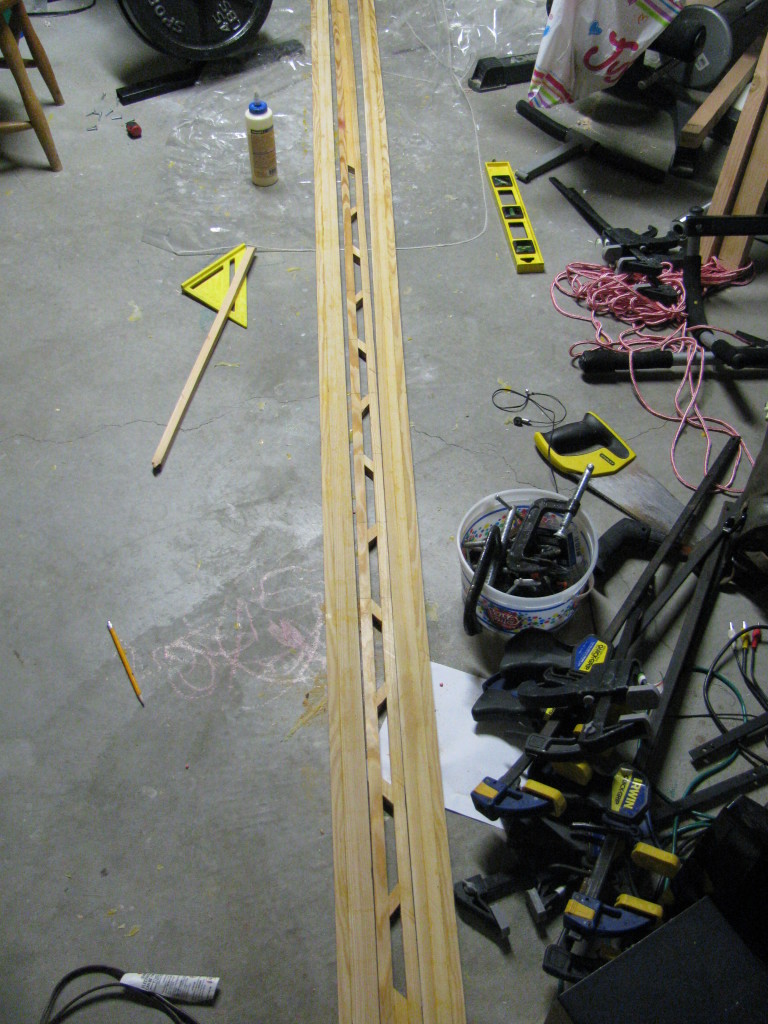
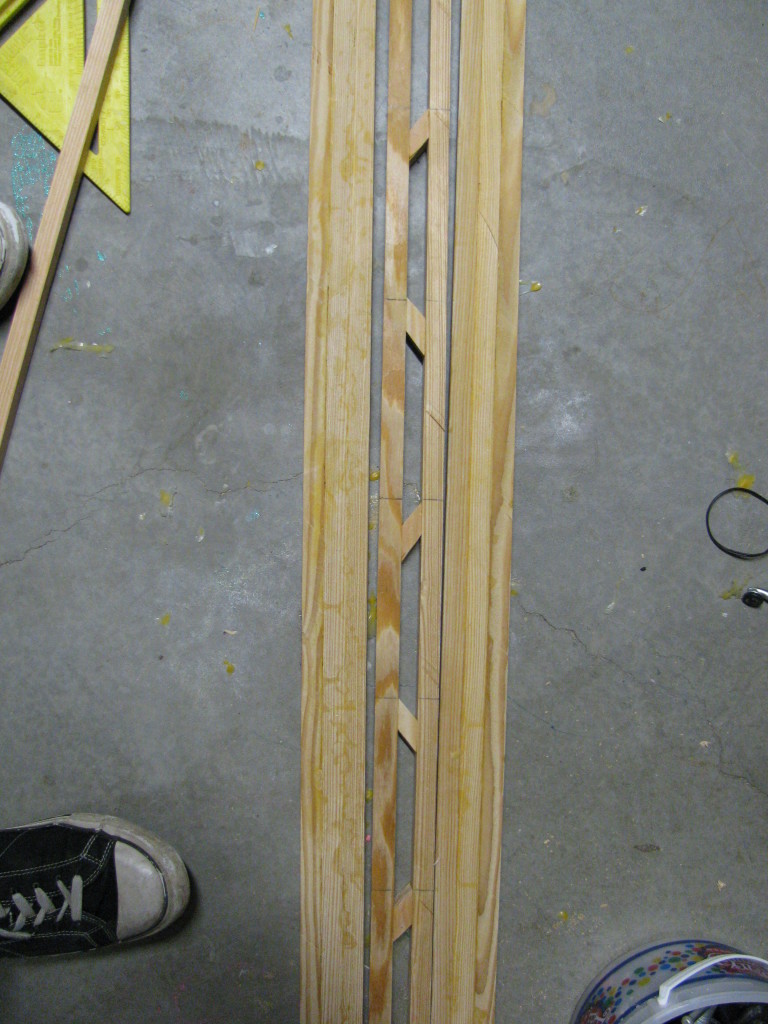
These laminations were surprisingly easy to make. I didn’t even bother really trying to straighten them out. It did take a bit of time to do because I didn’t try to glue up the solid laminations all at once. Instead I glued two strips together, waited a day for the glue to dry, and then added a third lamination. Because of that, and because I only have so many clamps, gluing up the mast took a few minutes a day for most of a week.
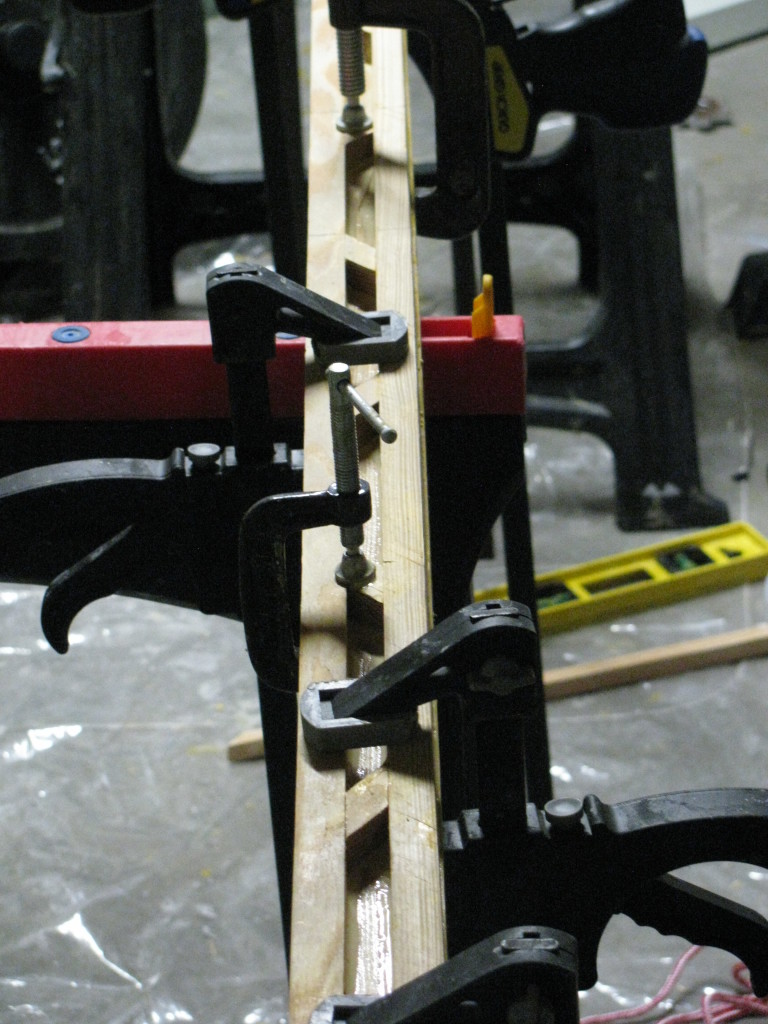
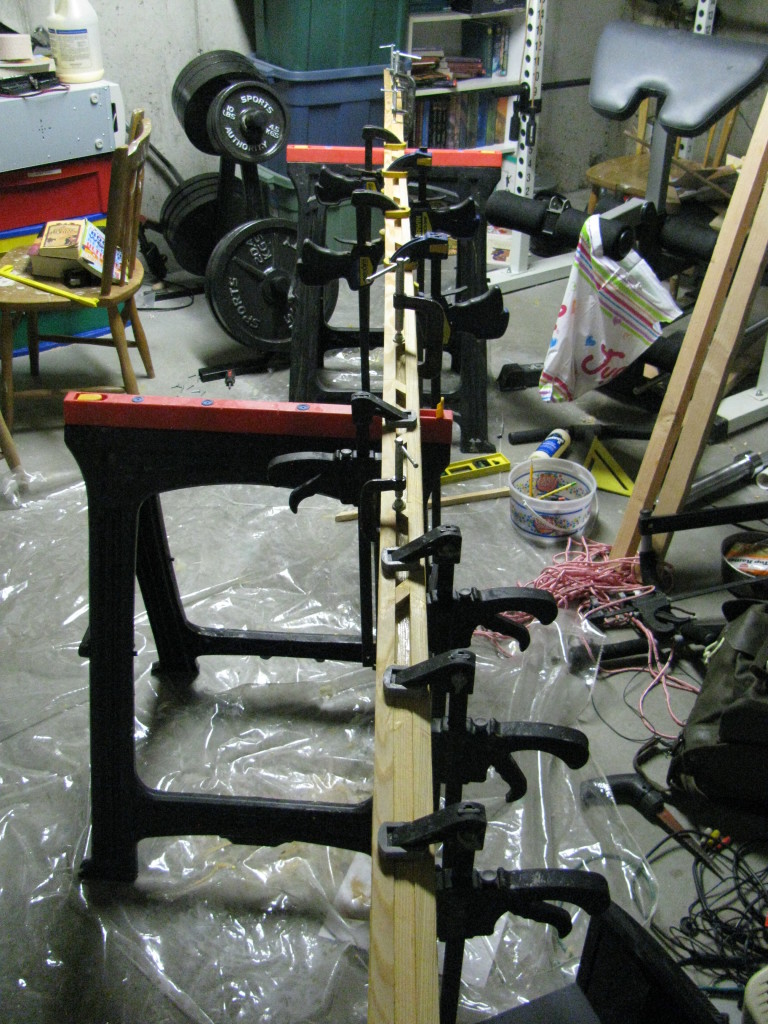
Other people have used similar methods to make the longer masts required for 16 foot leg o’ mutton or bermuda rigs. I am almost certainly being over cautious when I decided not to round the mast, especially considering the fact that my rig has rudimentary stays. I think that it is still quite possible that I might still round this particular mast and go back to plywood jaws on my gunter. The rope jaws currently allow for a bit of deflection, which you can see in this video. I think that I have solved the issue, at least on paper, but I won’t really know until the next time I go sailing.
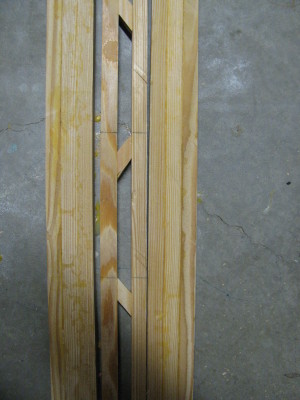
2 responses to “Puddle Duck Racer Build — Spars”
Why do you think the Toledo Community Boathouse to be more dangerous? It seems that you are both doing a similar process: 11/16″ parts, reinforced with internal blocks and tapered through it’s width (and not it’s thickness). Admittedly they are using fewer blocks than you are, and I suppose that some strength (at the cost of flexibility) is gained by laminating alternating grain together, however, you are both using the same raw material and it all comes down to the physical characteristics of the wood.
The danger is mostly in how the laminations were cut out. I laminated my mast up from smaller pieces so that I didn’t have to take the risks that Andrew did with the table saw. If you are comfortable using the table saw like Andy did, then his method is easier.
As you yourself noted, other than that I borrowed heavily from his article.